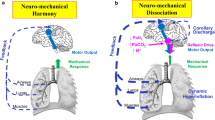Abstract
Objective
To determine the rates of resolution of symptoms and return to premorbid health status and assess the association of these outcomes with health care utilization in patients with community-acquired pneumonia.
Design
A prospective, multicenter cohort study.
Setting
Inpatient and outpatient facilities at three university hospitals, one community hospital, and one staff-model health maintenance organization.
Patients
Five hundred seventy-six adults (aged≥18 years) with clinical and radiographic evidence of pneumonia, judged by a validated pneumonia severity index to be at low risk of dying.
Measurements and main results
The presence and severity of five symptoms (cough, fatigue, dyspnea, sputum, and chest pain) were recorded through questionnaires administered at four time points: 0, 7, 30, and 90 days from the time of radiographic diagnosis of pneumonia. A summary symptom score was tabulated as the sum of the five individual severity scores. Patients also provided responses to the Medical Outcomes Study 36-Item Short Form Health Survey (SF-36) and reported the number of and reason for outpatient physician visits. Symptoms and health status 30 days before pneumonia onset (prepneumonia) were obtained at the initial interview. All symptoms, except pleuritic chest pain, were still commonly reported at 30 days, and the prevalence of each symptom at 90 days was still nearly twice prepneumonia levels. Physical health measures derived from the SF-36 Form declined significantly at presentation but continued to improve over all three follow-up time periods. Patients with elevated symptom scores at day 7 or day 30 were significantly more likely to report pneumonia-related ambulatory care visits at the subsequent day 30 or day 90 interviews, respectively.
Conclusions
Disease-specific symptom resolution and recovery of the premorbid physical health status requires more than 30 days for many patients with pneumonia. Delayed resolution of symptoms is associated with increased utilization of outpatient physician visits.
Similar content being viewed by others
References
Andrews BE. Community-acquired pneumonia in adults in British hospitals in 1982–1983: a survey of aetiology, mortality, prognostic factors and outcome. The British Thoracic Society and the Public Health Laboratory Service. Q J Med. 1987:62:195–220.
marrie TJ, Durant H, Yates L. Community-acquired pneumonia requiring hospitalization: 5-year prospective study. Rev Infect Dis. 1989:11:586–99.
Fine MJ, Orloff JJ, Arisumi D. et al. Prognosis of patients hospitalized with community-acquired pneumonia. Am J Med. 1990;88: 1N-8N.
Kapoor WN. Design of outcome studies of community-acquired pneumonia. Semin Respir Infect. 1994;9:214–9.
Fine MJ, Smith MA, Carson CA, et al. Prognosis and outcomes of patients with community-acquired pneumonia. JAMA. 1996;275: 134–41.
Jay SJ, Johanson WG, Pierce AK. The radiographic resolution of Streptococcus pneumoniae pneumonia. N Engl J Med. 1975;293: 798–801.
Marrie TJ. Normal resolution of community-acquired pneumonia. Semin Respir Infect. 1992;7:256–70.
Guyatt GH, Feeny DH, Patrick DL. Measuring health-related quality of life. Ann Intern Med. 1993;118:622–9.
Rubenstein LA, Schairer C, Wieland GD, Kane R. Systematic biases in functional status assessment of elderly adults: effects of different data sources. J Gerontol. 1984;38:686–91.
Magaziner J, Simonsick E, Kashner M, Hebel JR. Patient-proxy response comparability on measures of patient health and functional status. J Clin Epidemiol. 1988;41:1065–74.
Weinberger M, Samsa GP, Schmader K, Greenberg SM, Carr DB, Wildman DS. Comparing proxy and patients' perceptions of patients' functional status: results from an outpatient geriatric clinic. J Am Geriatr Soc. 1992;40:585–8.
Fine MJ, Hanusa BH, lave JR, et al. Comparison of a disease-specific and generic severity of illness measure for patients with community acquired pneumonia. J Gen Intern Med. 1995;10:358–68.
Fine MJ, Smith DN, Singer DE. Hospitalization decision in patients with community-acquired pneumonia: a prospective cohort study. Am J Med. 1990;89:713–21.
Anthonisen NR, Manfreda J, Warren PW, et al. Antibiotic therapy in exacerbations of chronic obstructive pulmonary disease. Ann Intern Med. 1987;106:196–204.
Belza BL. Comparison of self-reported fatigue in rheumatoid arthritis and controls. J Rheumatol. 1995;22:639–43.
Ware JE. SF-36 Health Survey, Manual and Interpretation Guide. Boston, Mass: The Health Institute: 1993.
Kendall M, Stuart A. The Advanced Theory of Statistics. Vol. 2. New York, NY: Macmillan Publishing Co.: 1979:580–5.
Mantel N, Haenszel W. Statistical aspects of the analysis of data from retrospective studies of disease. J Natl Cancer Inst. 1959; 22:719–48.
Cronbach LJ. Coefficient alpha and the internal structure of tests. Psychometrika. 1951;16:297–334.
Kazis LE, Anderson JJ, Meenan RF. Effect sizes for interpreting changes in health status. Med Care. 1989;27 (suppl):S178–89.
Douglas RM, Devitt L. Pneumonia in New Guinea: bacteriological findings in 632 adults with particular reference to Haemophilus influenzae. Med J Aust. 1973;1:42–9.
Boyd DHA. Failure of resolution in pneumonia. Br J Dis Chest. 1975;69:259–66.
Lehtomaki K. Clinical diagnosis of pneumococcal, adenoviral, mycoplasmal and mixed pneumonias in young men. Eur Respir J. 1988;1:324–9.
Author information
Authors and Affiliations
Additional information
This research was part of the Pneumonia Patient Outcomes Research Team (PORT) Project funded by the Agency for Health Care Policy and Research (grant R01 HS06468). Dr. Metlay is supported by a General Medicine Research Fellowship, NRSA grant 5T32PE11001-08. Dr. Fine is supported as a Robert Wood Johnson Foundation Generalist Physician Faculty Scholar.
Address correspondence and reprint requests to Dr. Metlay: General Internal Medicine Unit, 50 Staniford St., 9th Floor, Massachusetts General Hospital, Boston, MA 02114. *** DIRECT SUPPORT *** A02BX003 00005
Rights and permissions
About this article
Cite this article
Metlay, J.P., Fine, M.J., Schulz, R. et al. Measuring symptomatic and functional recovery in patients with community-acquired pneumonia. J GEN INTERN MED 12, 423–430 (1997). https://doi.org/10.1046/j.1525-1497.1997.00074.x
Issue Date:
DOI: https://doi.org/10.1046/j.1525-1497.1997.00074.x




